Game Reviews: Fire Emblem Engage, Hi-Fi Rush, Ratchet and Clank: Rifts Apart, 13 Sentinels: Aegis Rim
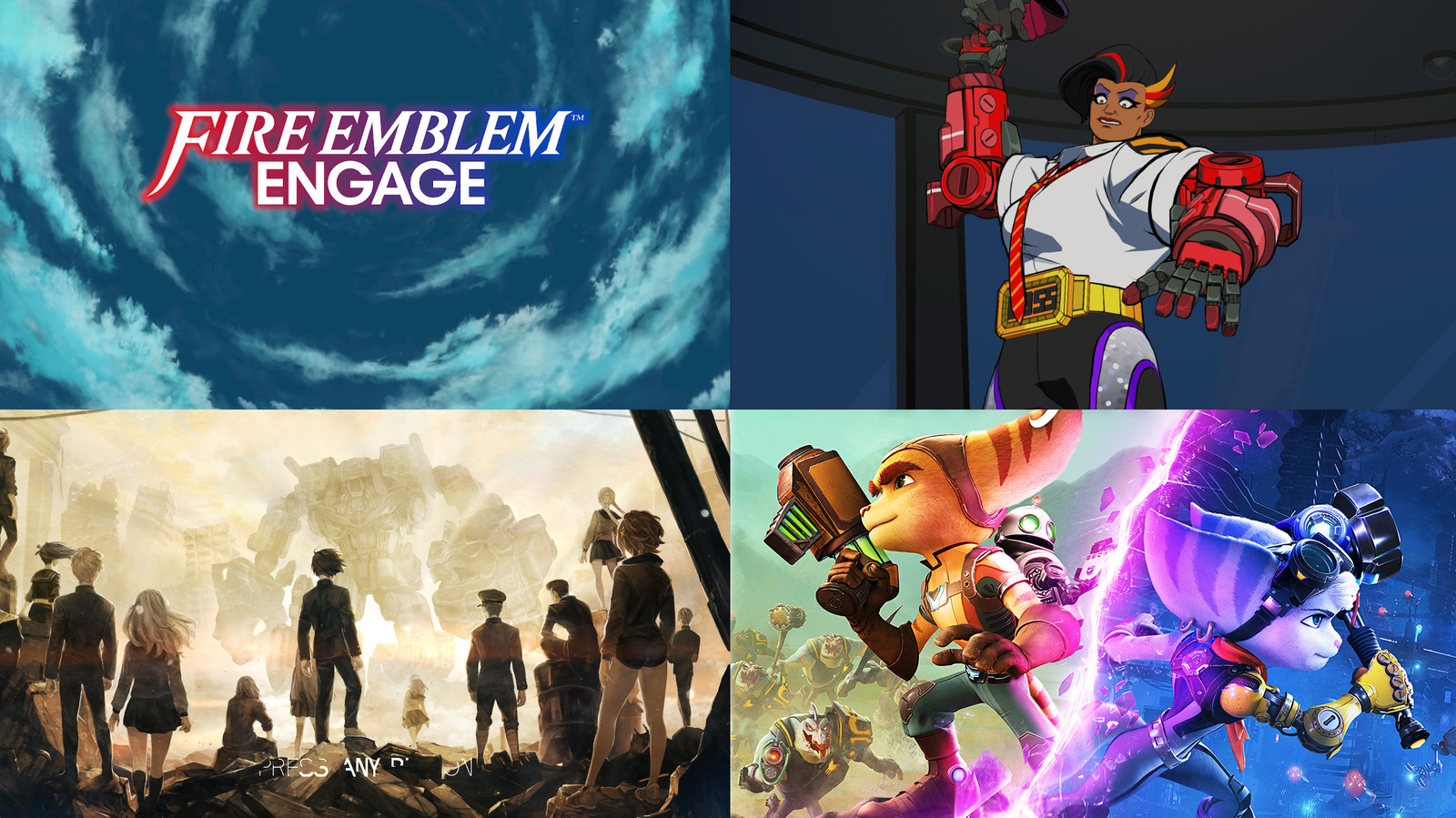
Over the winter and into the spring, I played several turn based and action/platform games. On the Switch, I finished Fire Emblem Engage, the third game I’ve beat in the Fire Emblem franchise. I also completed 13 Sentinels: Aegis Rim, a story rich kaiju versus robot anime adventure. On the PC, I played Hi-Fi Rush, an interesting mix of beat-em-up combat combined with musical beat matching in a retro futuristic world. I finished up the season with Ratchet and Clank: Rifts Apart, a cute and fun kids game that really shows off the power of the PS5 console.
Fire Emblem Engage
Fire Emblem Engage is the third Fire Emblem game I’ve played. My first was Fire Emblem Awakening for the 3DS and the second was Fire Emblem Three Houses for the Switch. Engage builds on a lot of the elements of its predecessors. It imports the previous title’s heroes as mystical beings connected to magic infused rings. The story is fairly straight forward, and the battle mechanics have some good improvements. However, the dialog is terrible for most of the game. Although the story has some good moments in later chapters, for the majority of the adventure, it felt as if it were just something I had to get through.

Gameplay
Like every other Fire Emblem title, Engage uses turn based strategy combat where individual characters move around, attack and defend on a grid based map. Visually, characters now walk as you select their destination, which is a nice touch. You can also walk around the battlefield once combat is over. This seemed interesting at first, but quickly got old. It felt like a chore to pick up items after each stage.
Weapons and spell books no longer have limited usages, which greatly changes the long term strategy of the game. Healing staffs do have limited uses. Multiple health gauges are still present on bosses, major enemies and some beasts. There seems to only be one type of beast now, that has long range attacks.
The engage mechanic is a really neat aspect of the game. It shows the incredible amount of time that went into creating artwork and animations for each character’s emblem form. The time crystal from Three Houses has also made its way into this title, helping take back moves made in error like in a traditional table top board game (and helping greatly if you play this in classic mode, where characters can die forever). However, one thing I hate is that the map can no longer be fully rotated 360 degrees. If your characters start off on either the top or the bottom of the map, and you prefer viewing them from the opposite angle, there’s no way to rotate the map around like previous titles.
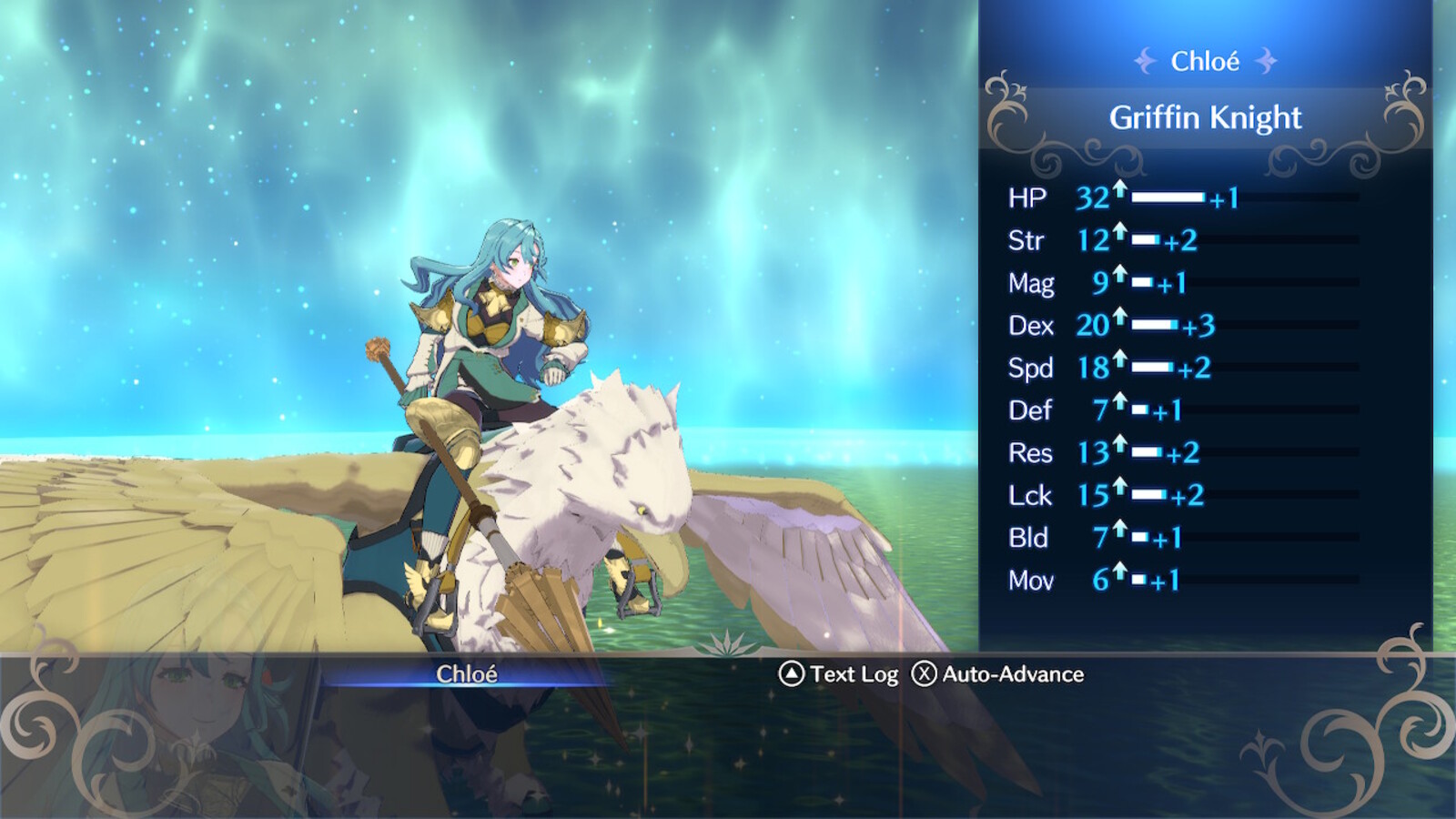
The main character, Alera, is incredibly weak. Typically the main heroes in other Fire Emblem games are the most powerful pieces on the board. In Engage, I felt as if I had to constantly hide and defend this character behind others in order to survive. Maybe it was the way I played the early game, but I could never get Alera leveled up to the point where she became a useful character past the opening chapters.
Between chapters, you can return to the The Somniel, a home base that floats in the sky that’s shaped like a woman’s reproductive track. On The Somniel, you can run around like a sperm through a fallopian tube, finding fruit in the ovaries, purchasing supplies in the uterus, playing mini-games, and picking up random items all over the place. Honestly, the between chapter tasks in The Somniel feel more like chores to raise your team’s levels. They are just as boring as running around the map after battle sequences.

Overall, I like the improvements to the gameplay. Attack animations are faster and they zoom in to the location of the map where they take place, making them feel more immersive. It was neat enough that I didn’t turn them off for nearly 90% of the game. Battles are still fairly long, ranging from half an hour to an hour. At first I was afraid battles might be dumbed down and too easy for this title, but the difficulty grew at a steady and fair pace as the game progressed. The battles were really the best part of this game.
The Emblems
At first, I didn’t realize that all of the Emblems are heroes from all the previous Fire Emblem games. Since a lot of these games weren’t released in the US, this might not have the nostalgic pull it would have in other markets. I couldn’t remember which emblem was the hero from Awakening until I started creating bond rings, which represent the individual characters of the heroes’ respective games. Most of the paralogues (side quests) deal with fighting the emblems themselves, often in places that resemble historic battles from their own worlds. They were pretty difficult at first and I tended to avoid them, but they become almost necessary to level up for the the final few chapters.
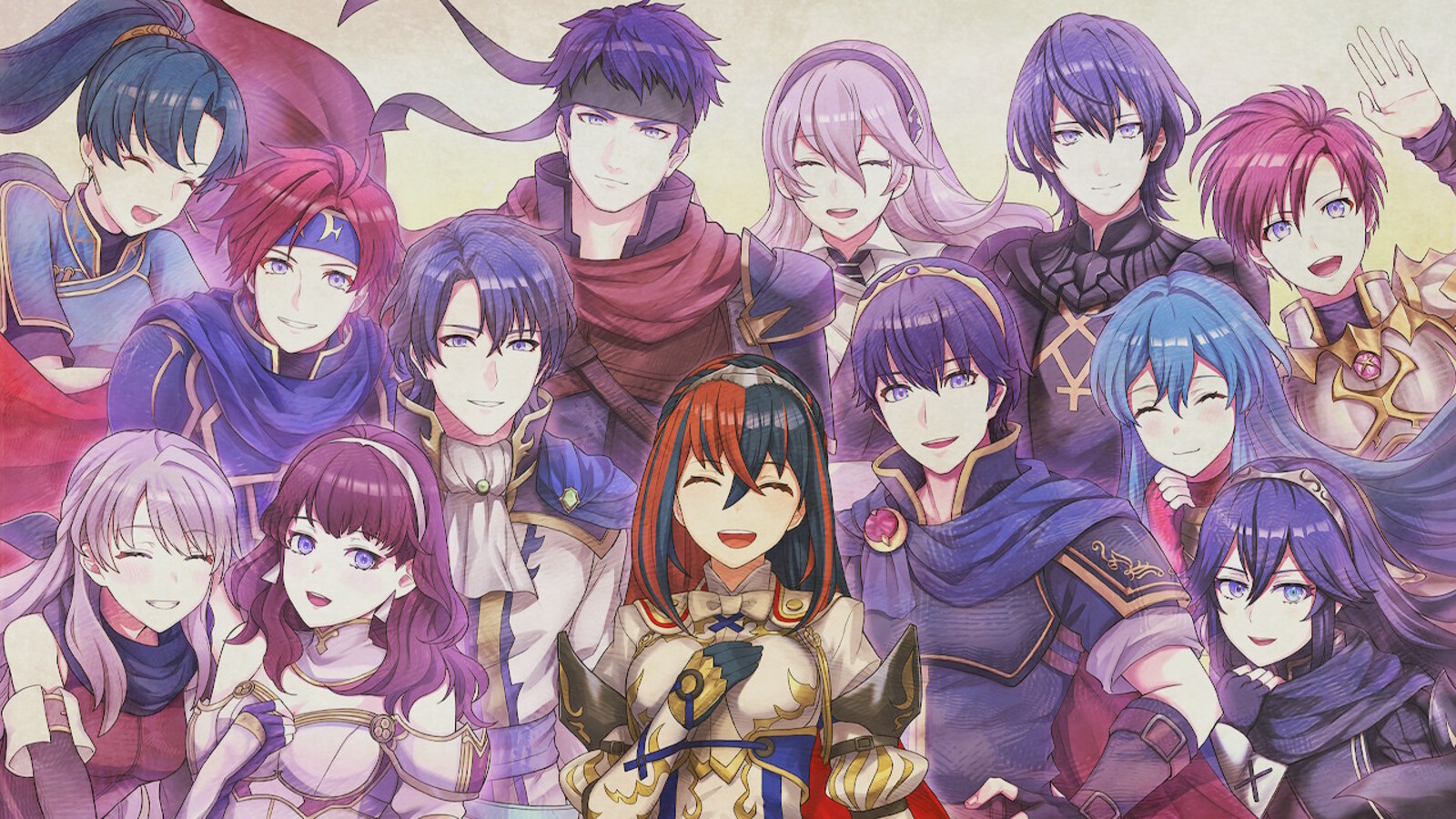
The emblems are a really neat concept, but one I’m sad to say I couldn’t really appreciate. Fans of the series will surely get more out of it. The emblems don’t seem to spoil any parts of their own stories, but instead tease and draw players to the older games. There’s not much explanation around their presence, and I’m glad their own support conversations are very short.
The Story
The dialog in Engage is bad, even for a Fire Emblem game. I realize story, dialog and voice acting has never been great for games. However, it’s improved quite dramatically over the past several years of game design for both big budget and independent titles. Engage is starting to show the age of traditional Fire Emblem story telling mechanics.
The opening chapters of the game feel like a traditional battle of good versus evil. There was little complexity or ambiguity. The Divine Dragon is good and the Fell Dragon is bad and no one has to make morally challenging decisions. Some questionable characters join your team, but there is little challenge to their loyalty or intentions.
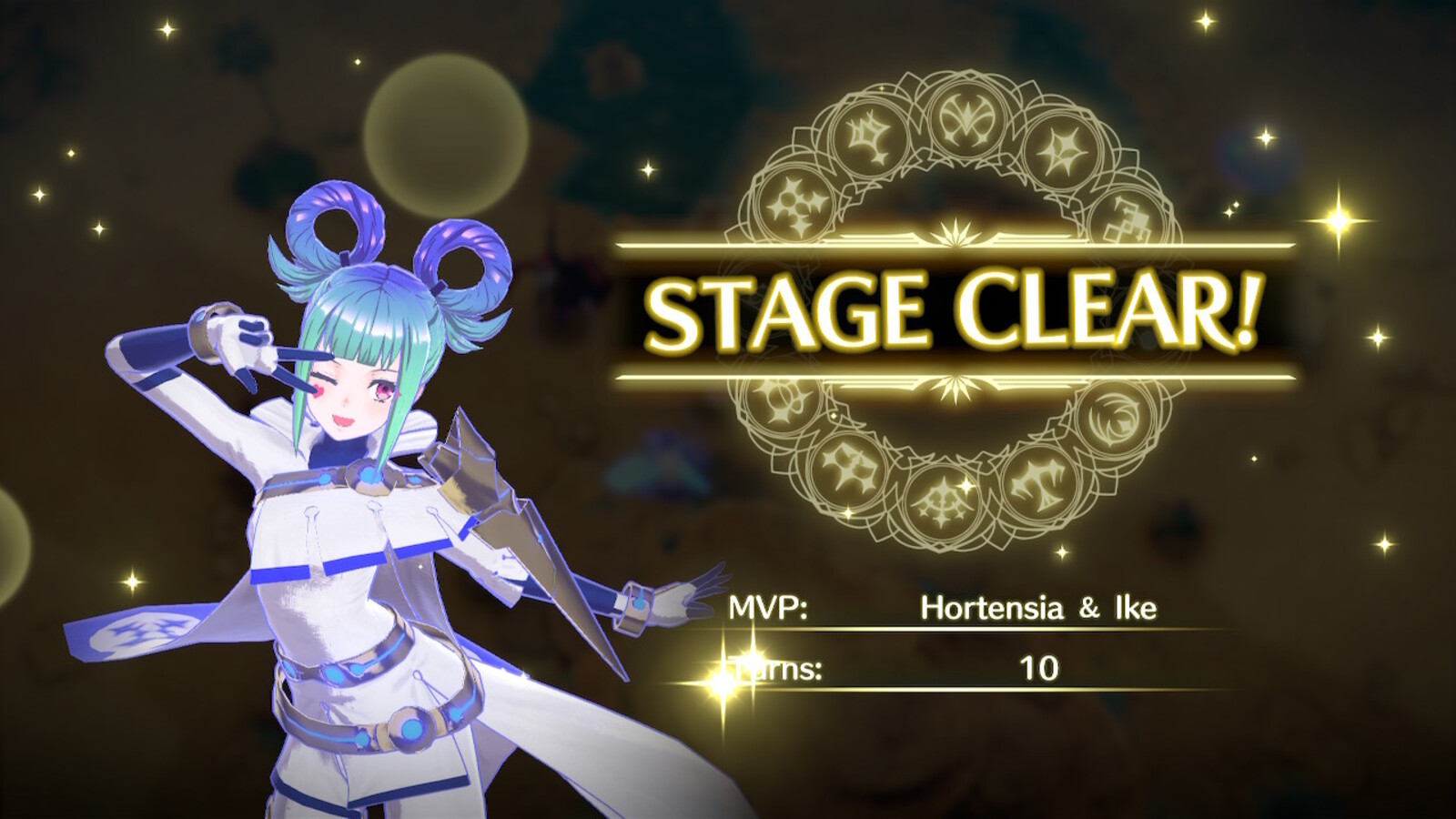
The story does improve past the midpoint of adventure. It feels as if the writers packed some of the better dialog for the higher support level conversations. Still, even with a few pieces that really felt emotional, the vast majority of the dialog dragged on way too long. Characters confronted their enemies with long drawn out exposition, right in front of them, and then the player switches to a battle where those same enemies are on the other side of the screen. I know most Fire Emblem games are like this, but it felt particularly blatant in Engage.
There are some good reveals and neat story arcs despite the kid’s movie type narrative. I did grow to find some of the characters very memorable. However, for about 70% of the game, I felt like I was simply grinding the story to get to the battles.
Censorship
Engage is a terrible name. I’m not sure if the Japanese version feels any better in their language. I could understand naming it something like “Summon” wouldn’t work well, as the Emblems are meant to be companions and not spirits or tools. Still I have to think they could have used a better English word. That brings us to another issue with localization: the censorship.
Even before its release, there were reports that romantic conversations were being removed, and translated as more platonic1. Some reported these changes were only for underage characters2. However, it turns out these changes extended across the board to many of the adult characters, and those romantic conversations were actually left in the Chinese translation!3 Even gendered language, such as “man” and “woman” were removed4.
I played as the female Alera, having an interest in Rossado. The English localization portrays their relationship as a close platonic friendship5. A translation of the Japanese has both characters talking about a “warmth in their chest,” considering each other as partners, and speaks to Rosado’s desire to protect Alera forever67.
It makes me wonder if some of the story may have not been as terrible with a better translation of the original dialogue. Unless you can read Japanese, and have access to the original game, western players will have a very different character experience.
Conclusions
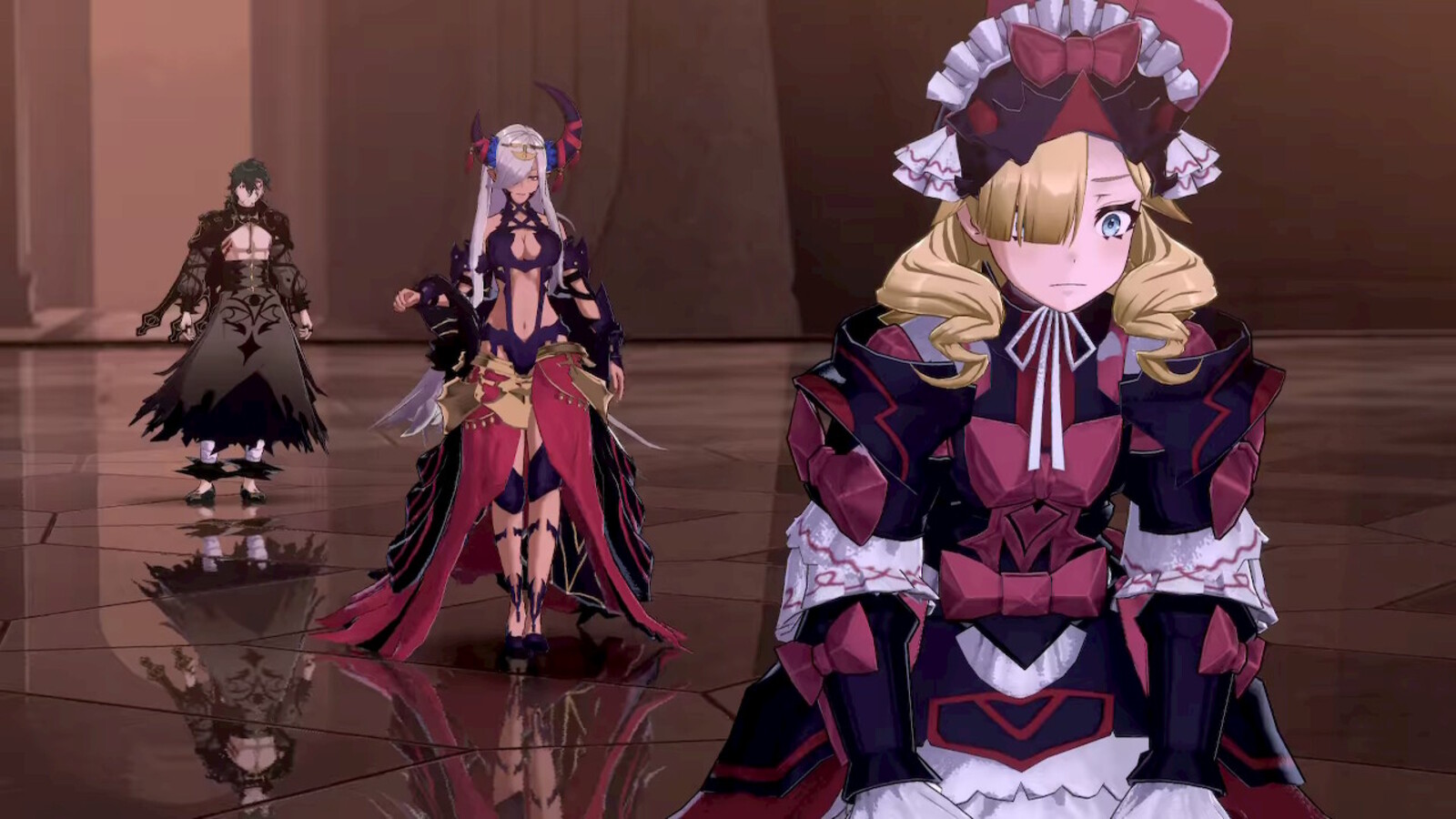
Fire Emblem Engage is disappointing because it has a great battle system, but horrible dialog. The story feels very basic at first, but it does grow to contain some dynamic and thought provoking elements. However, many of the romantic subplots have been neutered in the English translation. The game did draw me in and keep me engaged for nearly 50 hours of gameplay. Yet, even with some of the better story telling packed in towards the end, I still felt like this was the type of game where you grind through the story to get to the battles. That’s not a great feel for a role playing game. It’s a fun title, but not one I’d recommend as an introduction to the Fire Emblem series.
Hi-Fi Rush
Hi-Fi Rush is a rhythm based, sci-fi beat-em-up that feels like a hard rock musical version of Futurama. The characters are all very silly, well animated and hilarious. It’s a very unique game conceptually, and I love the idea of rhythm based attacks and combos. There are so many amazing minor details and elements that sync perfectly to a bumping rhythm. The cartoonish animation style and general silliness really drew me in to this uniquely fun and challenging title.
Gameplay
Everything is on a beat. Combo attacks and assistant chips can be purchased by collecting various parts laying around. A tutorial, playing into the rock star theme, takes the player out of the game occasionally to get you use to the combat mechanics. A friendly refrigerator also assists you in game. Partners are slowly gained throughout the levels which can be pulled in to assist with fights. There are also areas that can only be opened on replays with abilities from later characters.
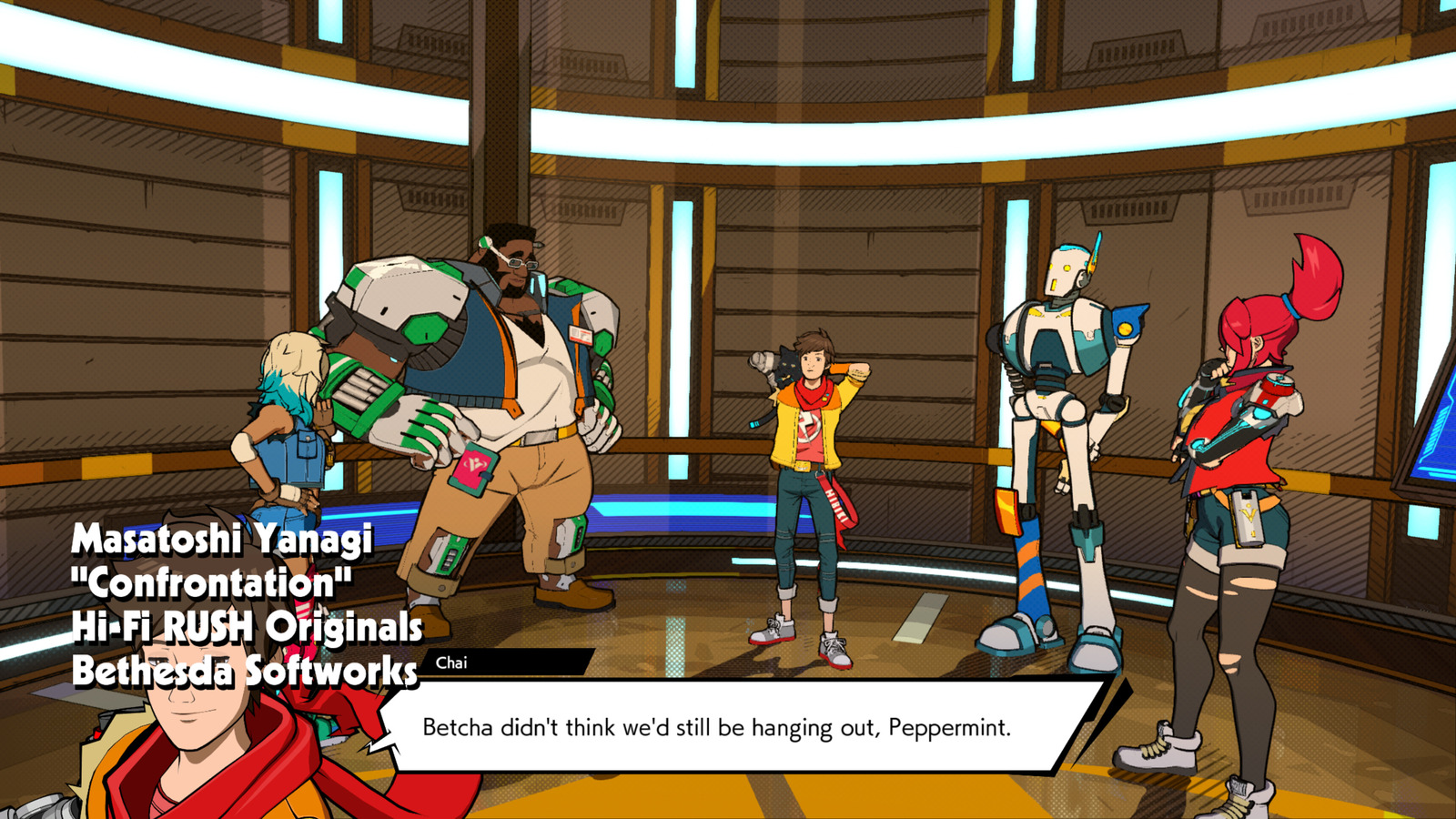
The levels are long, taking nearly an hour each. Thankfully, there are many checkpoints that save within each level. Each level consists of puzzles, exploration, secrets and battles. Fights close of a section and have clear beginnings and endings with style scorecards at the end. Bosses are challenging, with many of them having three to four stages or “verses” you have to defeat.
Overall the game mechanics feel really polished and great. I only ran into one serious game bug pictured above. My only gripes is that not everything is on the beat. Some of Korsica’s wind beat puzzles are particularly annoying, and there are some patterns and off-beat challenges sprinkled throughout the game that took a while to get my head around. While it doesn’t have the final boss difficulty ramp-up of Lithium City, the final round was insanely challenging, required a lot of work, and I ultimately used a strategy that felt cheap and disappointing. Still, the overall feel of the game mechanics were really fun, had a solid level of challenge and felt really enjoyable.
Story
I feel like the writers of this game had to be fans of Futurama. It has so many of the same design elements including useless robots, a big evil robot corporation, and quirky characters. The main character, Chai, feels like a want-to-be rock star version of Philip J. Fry. He has an amazing character arc, starting out as being arrogant, annoying and dumb. I love the progression of his character, making him into much more than just a comic relief protagonist.

This game is also incredibly funny. There are some parts that really just surprised the hell out of me, with lots of little bits and jabs scattered throughout the robot dialog. The boss fights feel very over the top, with incredibly well animated antagonists. Each boss weapon is intentionally ridiculous.
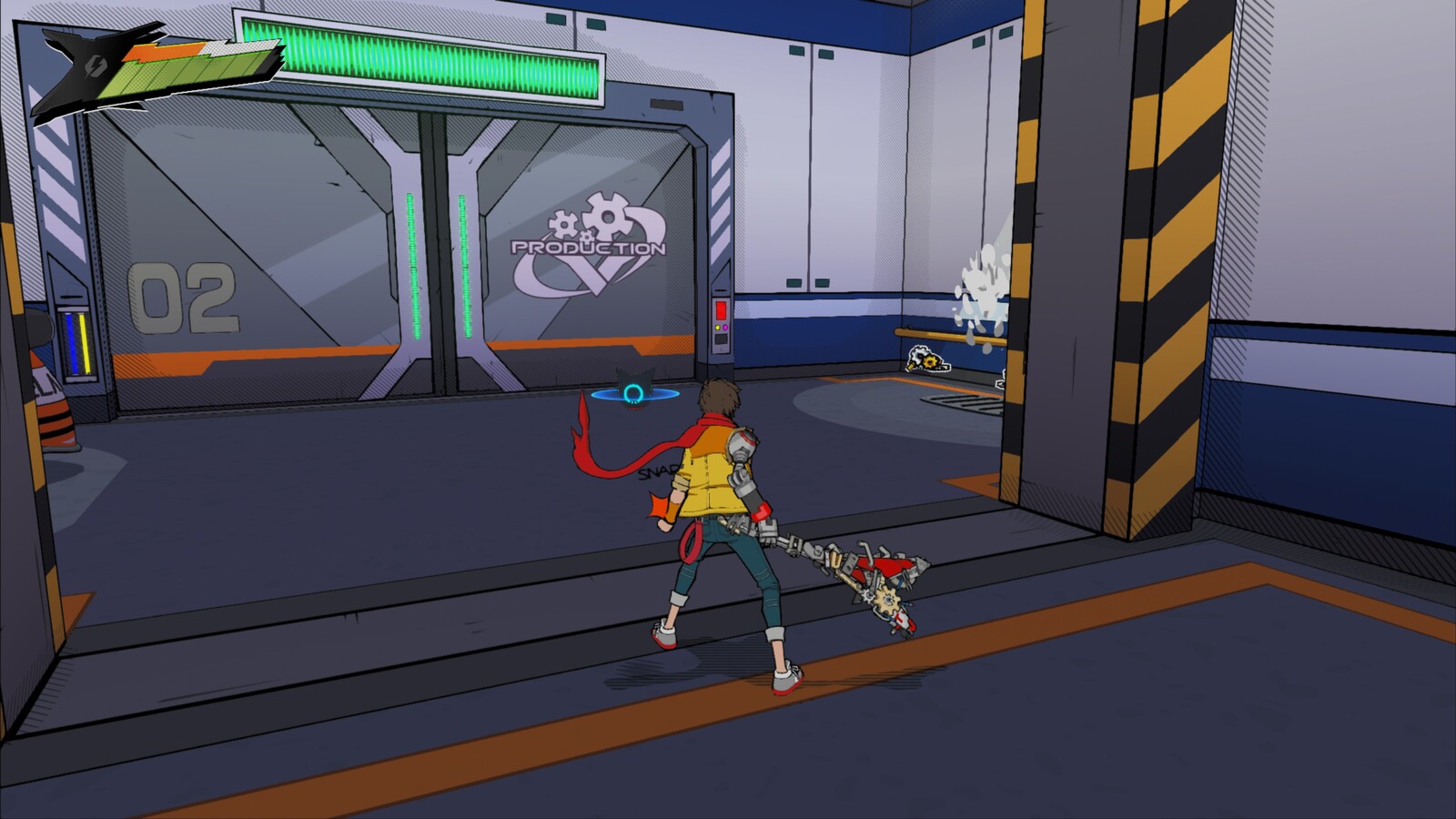
The story itself is really wacky. No part of it is really suppose to make sense. Chai’s MP3 player infused Ironman type heart that causes the world to sync to the beat, is treated as cyberpunk space magic. There’s a great mix of cartoon and 70’s sci-fi aesthetic that really brings all the characters, music and animation to life. Overall, it started off silly but really does pull the player in. By the end, you will be hit in the feels.
Conclusion
I wasn’t sure if I’d really be into this game. I do love all types of music, but I’m not hardcore into classic rock and metal. Most of the major songs do have pop up title cards in the corner, similar to classic music videos (back when MTV and VH1 actually played music). There are optional “streamer friendly” tracks for people who want to live stream their games without worrying about copyrighted music.
I loved the game mechanics. It was a huge step up from a classic brawler like Devil May Cry 5. By adding a really unique beat system, and colorful animation, it becomes a playful and funny adventure. In a way, it took a lot of things I don’t really like in games and mixed them perfectly into something really enjoyable.

The music honestly isn’t really anything to write home about. There won’t be any nostalgic pulls like with Sackboy: A Big Adventure unless you’re really into classic 90s and 2000s rock. What really made this game for me was the unique beat matching, the incredibly beautiful animation, the quirky characters and endearing story. At nearly 14 hours of gameplay, it hits all the right beats, figuratively and literally, to make a really entertaining adventure.
Ratchet and Clank: Rifts Apart
Ratchet and Clank: Rifts Apart is the first game I’ve finished in the Ratchet and Clank franchise. I played through a few hours on one of the PlayStation Portable titles, but haven’t had any other experience with the series. What I encountered was a really fun 3rd person platformer with amazing graphics, a simplistic story and great smash-em-up and shooting mechanics that are enjoyable for both kids and adults.
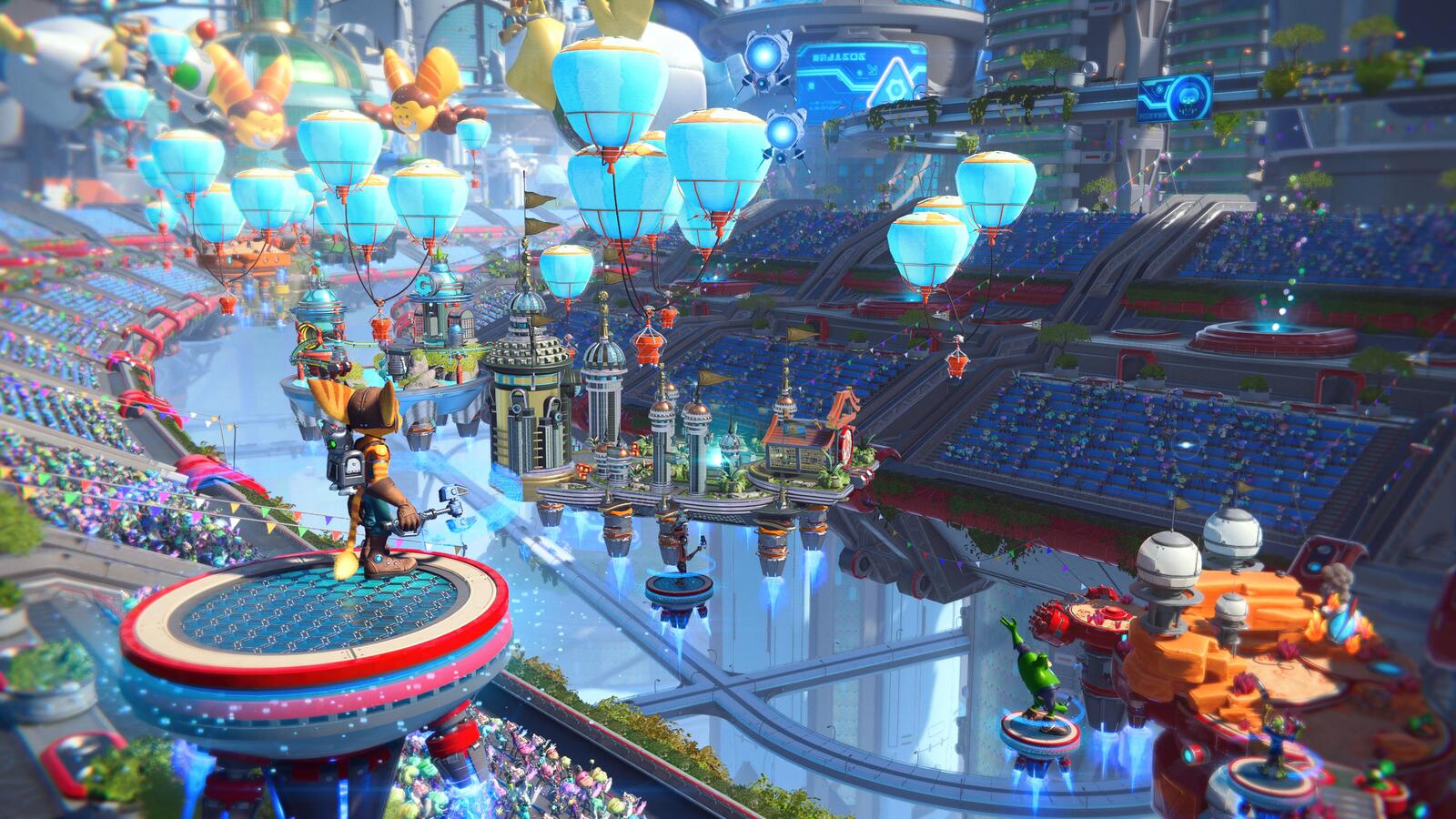
Graphics
Rifts Apart is a great example of the generational jump with the PlayStation 5. The animation honestly makes me feel like I’m playing a Pixar movie from only a few years ago. All of the characters have incredible details. Fast moving enemies are silly, yet have well drawn aesthetics that you can appreciate while running around the screen to avoid being killed. The amazing artwork, animations and visuals truly add to the adventure, and make up for the more basic aspects of the game.

Gameplay
The main game mechanics are that of a 3rd person platformer geared at kids. All the normal weapon types found in games geared at older audiences are present: blasters, shotguns, rocket launchers and even chain guns. However, they’re all given cute names and are drawn like toys. That isn’t to say they they don’t preform as expected. The game fully utilizes the PS5 controller for unique feedback for everything from weapons to exploration to cut sequences.
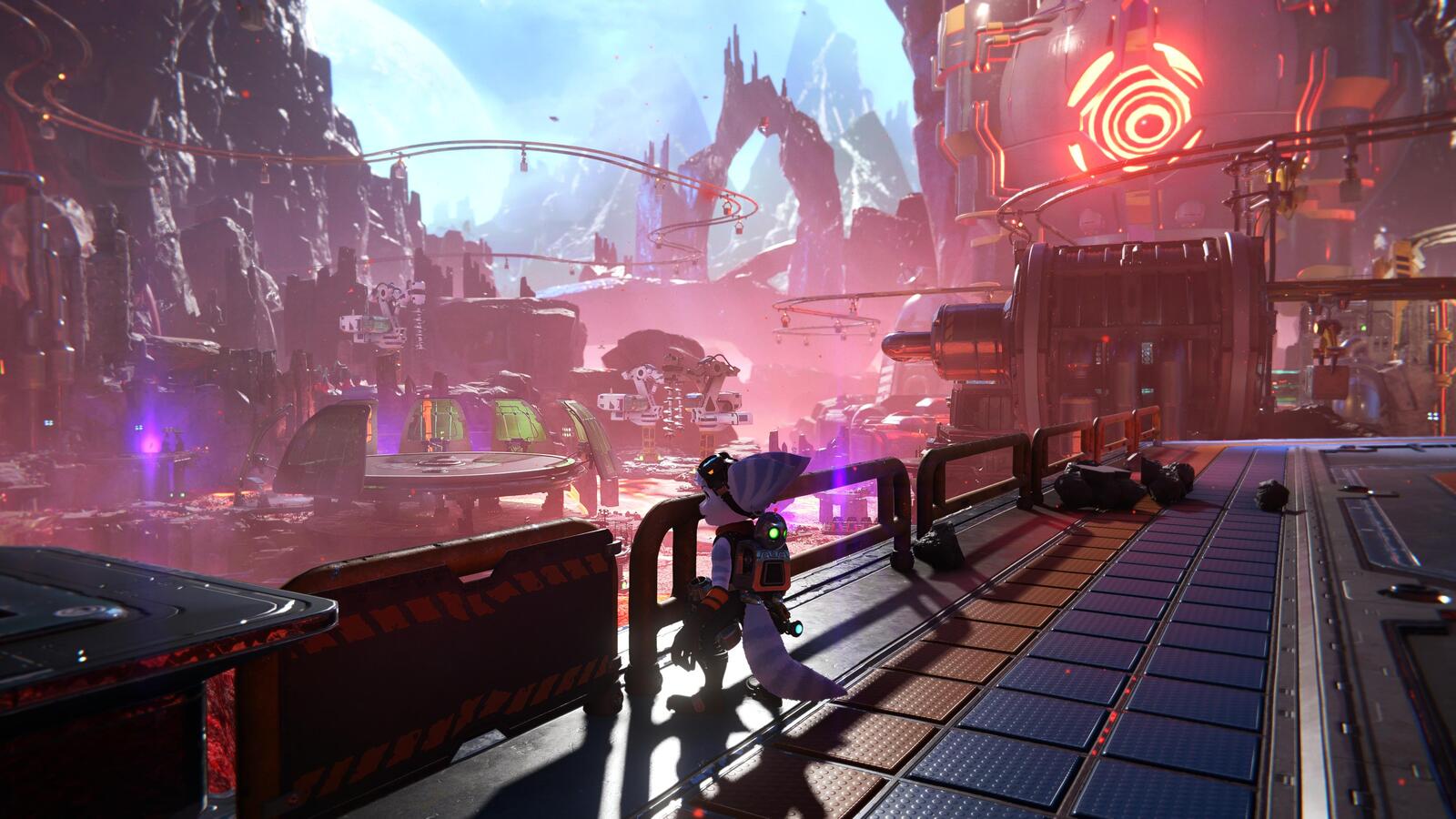
The game allows for some exploration, but it’s mostly linear in nature. Some areas you can travel back to, in order to get extras. There are a lot of weapons you can purchase and a ton of upgrades to buy. I’m not a fan of how weapons and gadgets are treated the same, and occupy the same places on the weapon wheel. Each level also has a good amount of exploration, secrets and simple puzzles. There are also some fun rail sequences, as well as small puzzle and shooting mini-games involving the Clank and Glitch side characters.
Story
The story is the weakest part of Rifts Apart. It’s a very basic theme of good guys versus bad guys. If you’ve played other Ratchet and Clank games, you may enjoy the alternate versions of what I assume are classic or reoccurring characters. If you haven’t, the multidimensional rifts add some fun mechanics and visuals, but there’s no deep story involving the various dimensions. It might look like a Pixar movie, but don’t expect any thought provoking ideas or meaning.

Conclusion
Ratchet and Clank: Rifts Apart is a really fun and visually stunning game. It’s a great kids title, yet still provides a decent challenge for adults. It’s a great way to introduce younger audiences to many mechanics found in more mature titles, as well as being and excellent demo of the PS5’s amazing controller feedback and next generation graphics. It’s a fun, relaxing and engaging title so long as you don’t expect too much.
13 Sentinels: Aegis Rim
13 Sentinels: Aegis Rim is part mechanical fighter turn based strategy, part anime story telling adventure, and part retro game, with robotic swarms of enemies. It has an incredibly rich story, even as it follows the typical trope of teenagers in high school being the only ones who can save the world. It’s a fun and addictive adventure, with over 38 hours of content.

Gameplay
The introduction starts out by switching back and fourth between story missions and battle tutorials. The story elements are more than a typical anime interactive novel. They’re incredibly well drawn with excellent voice acting. Every character and scene has a wonderfully animated pulsing aesthetic, and the artwork is incredibly rich and detailed. It’s a stark contrast to the somewhat more primitive retro battle sequences, where images of your enemies are occasionally overlayed atop their pixelated representations during the mission intros.
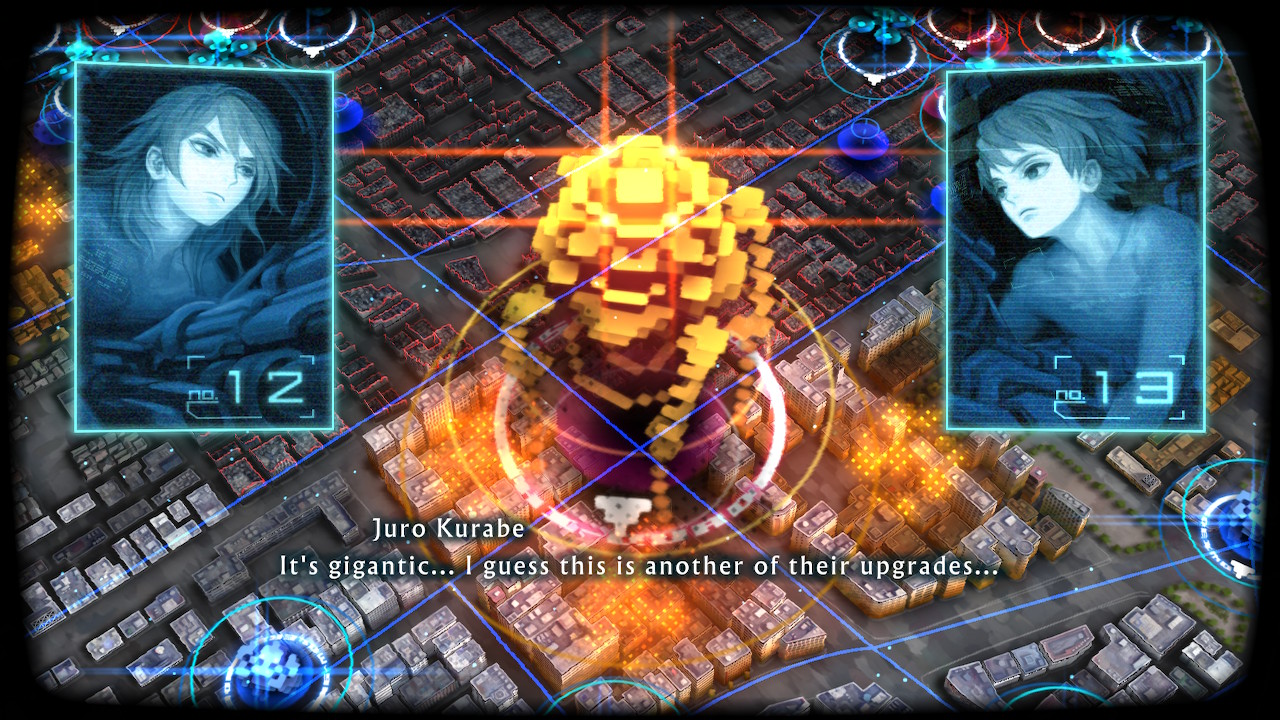
This back and fourth between narrative and action continues through the tutorial missions. After the introductions, the options really open up. You can switch between the two tracks, unlocking story and fighting as you progress through each. The battles are an odd form of turn based fighting, where the gameplay continues until a time gauge fills; after which the game pauses to allow selecting movement or actions for a pilot before continuing.
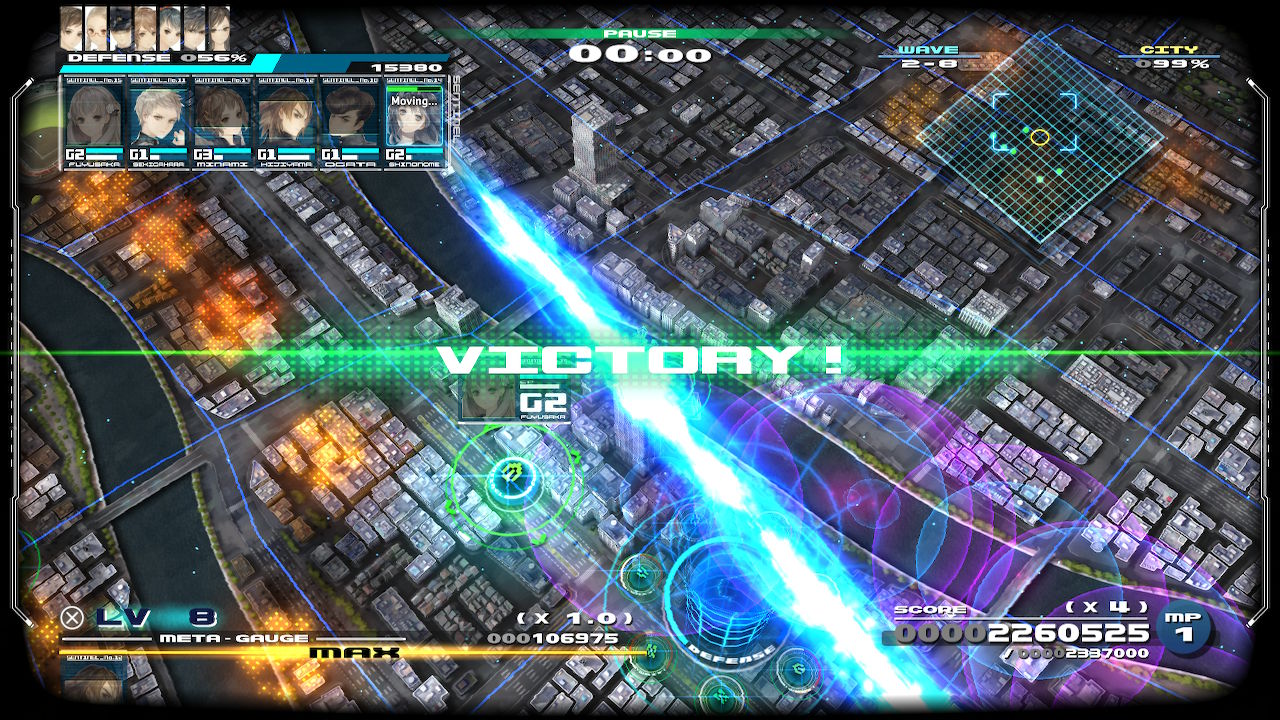
Battles slowly grow to be massive wave combat, with a lot of action going on the screen at once. It’s not overwhelming though, and really pulls the player into the game. The difficulty curve felt about perfect, although the other characters often give you useless strategy tips at the end of each battle (useless because it’s often strategy you would have needed to figure out on your own several missions prior). The only other thing that bothered me about combat was not being able to rotate the map, but it’s not a limitation that’s difficult to work with.
It’s almost a turn based version of the classic Robotron. The soundtrack, thick bass and well crafted sound effects all work together to really create an immersive sci-fi kaiju combat sim.
Story
One of my major critiques of this game is the massive number of characters. There are 13 individual pilot stories you must unlock and progress through. Obviously this means their stories are experienced out of order. Combined with a time travel element, the characters can get confusing very quickly. Often I ignore game codexes, but in 13 Sentinels, the “Mysteries” section is an essential piece of the game. Often I used it to pull up characters’ bios during dialog, in order to keep everyone straight.
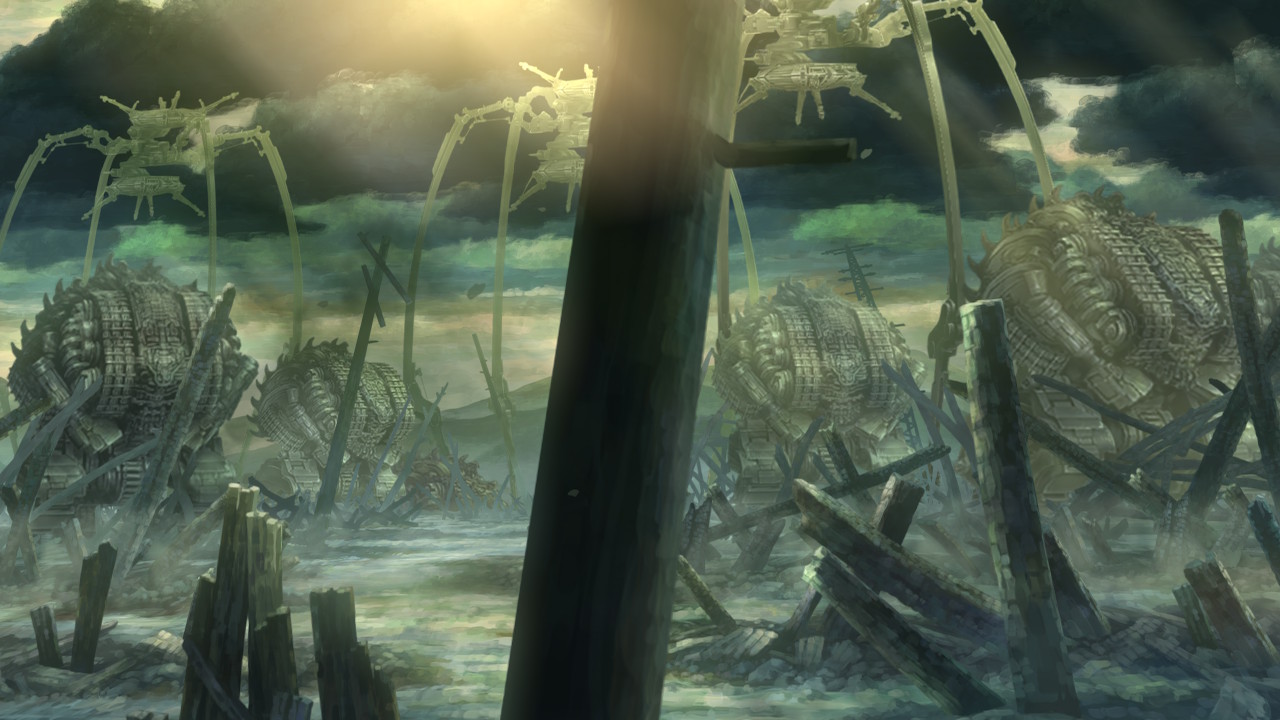
Often when games are localized from Japan to Western markets, many of the titles (such as san and senpai) are dropped. However, 13 Sentinels explicitly keeps Japanese titles and full names, as they are essential to understand some of the character intricacies of the rather complex story. The codex even goes on to explain many of the puns and wordplay from the original Japanese, which is quite interesting. Unlike a certain other turn based title, thankfully none of the romantic conversations were removed in translation.
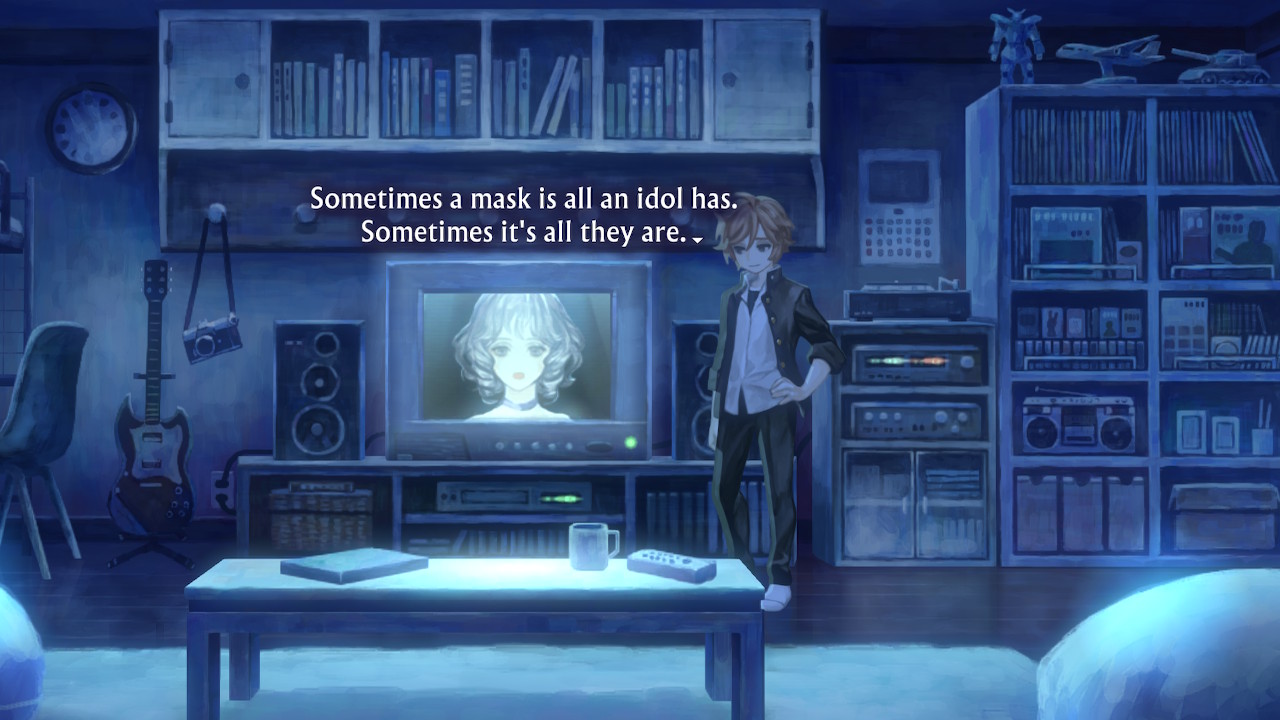
Despite how complex the story initially felt, it does a great job of progression, and collapsing back into a really full and well rounded explanation of the world the characters are a part of. Many of the characters have in-depth growth arcs, and their relationships are cute, heartfelt and enduring. Without giving too much away, the story also manages to deal with time travel without breaking causality. You might think that’s impossible, but it’s really an impressive feet that can only be described by experiencing it.
Overall
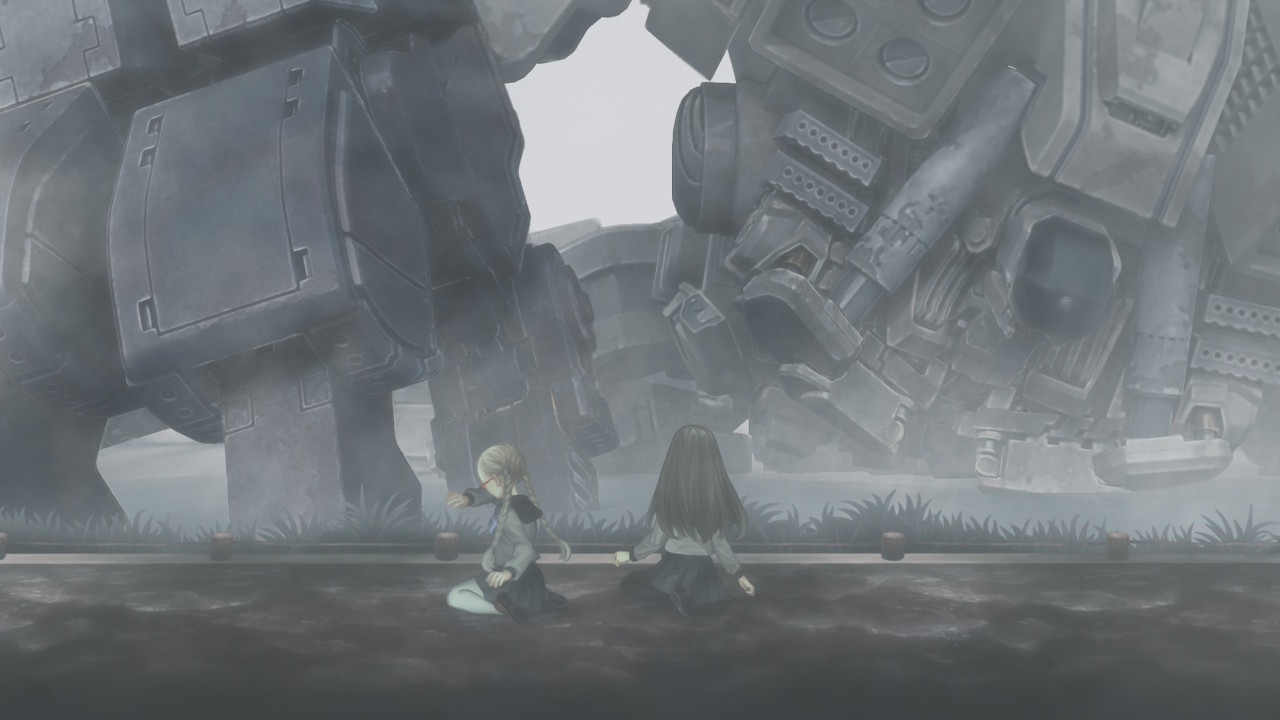
I really enjoyed playing this game. Both the combat and story are incredibly well done. The soundtrack is thumpim’ and the story is complex, yet complete. At times, I felt as if the game could have done better with fewer main characters. Yet, by the end, I understood why the writers went this route and it worked out really well. As with anything related to time travel, artificial intelligence and loops, the story can start to break down if you start to think about it too much. However, that’s something I can forgive with the way the game is pulled together to be immensely satisfying.
The way the elements of the visual novel and adventure game were interwoven was really creative as well. By the end of my journey, after I had completed nearly 100% of the base game, I was craving the satisfaction of eating yakisoba pan after battling endless waves of kaiju. 13 Sentinels: Aegis Rim is an excellent story driven strategy game. It’s an adventure well worth the journey through both space and time.
Wrap Up
I had fun staying in and playing games over the colder months. I feel caught up on PlayStation exclusives in time for upcoming anticipated releases. The titles I played through covered a variety of genres, some tired and true, and others with new unique twists and mechanics. In the next few months, I hope to get through some classics, as well as get away from the console to focus on other technology posts. Thanks for reading and happy gaming.
-
It seems Fire Emblem Engage got even stronger censored by Nintendo’s localization team than anticipated. Any romance lines with supports that were with minors were removed…. 17 January 2023. @Mondblut1984 ↩
-
Fire Emblem Engage ‘Censorship’ Removes Romance Lines for Underage Characters — Report. 20 January, 2023. Ashworth. GameRevolution. ↩
-
Fire Emblem Engage CENSORED! All Romance Removed!. 27 January, 2023. Ryvoonz. ↩
-
Fire Emblem Engage - Censorship. Fandom. Retrieved 21 Feb 2023. ↩
-
Alear x Rosado. Serenes Forest. Retrieved 22 Feburary 2023. Archive ↩
-
JP Rosado S Support Translation - r/fireemblem. u/Lyritha. Reddit. 3 Feb 2023. Retrieved 22 Feb 2023. Screenshot ↩
-
To hell with it, gonna post JPN S-rank translations - Fire Emblem Engage. 23 Jan 2023. Cynrascal. GameFAQs/Gamespot. Screenshot ↩